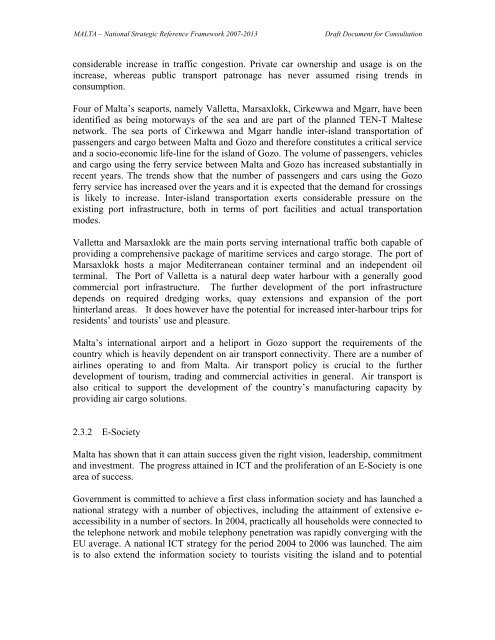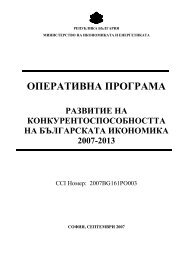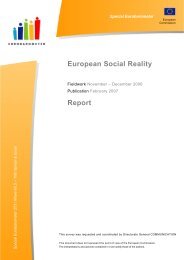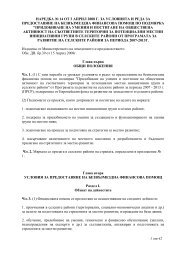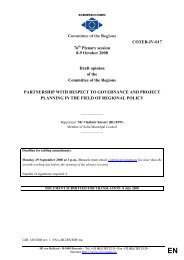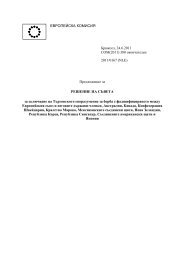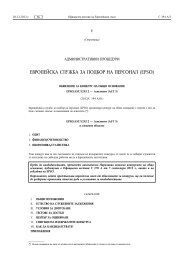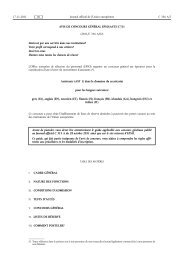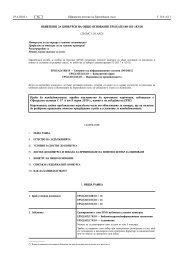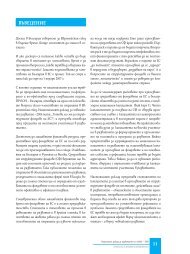National Strategic Reference Framework
National Strategic Reference Framework
National Strategic Reference Framework
You also want an ePaper? Increase the reach of your titles
YUMPU automatically turns print PDFs into web optimized ePapers that Google loves.
MALTA – <strong>National</strong> <strong>Strategic</strong> <strong>Reference</strong> <strong>Framework</strong> 2007-2013 Draft Document for Consultation<br />
considerable increase in traffic congestion. Private car ownership and usage is on the<br />
increase, whereas public transport patronage has never assumed rising trends in<br />
consumption.<br />
Four of Malta’s seaports, namely Valletta, Marsaxlokk, Cirkewwa and Mgarr, have been<br />
identified as being motorways of the sea and are part of the planned TEN-T Maltese<br />
network. The sea ports of Cirkewwa and Mgarr handle inter-island transportation of<br />
passengers and cargo between Malta and Gozo and therefore constitutes a critical service<br />
and a socio-economic life-line for the island of Gozo. The volume of passengers, vehicles<br />
and cargo using the ferry service between Malta and Gozo has increased substantially in<br />
recent years. The trends show that the number of passengers and cars using the Gozo<br />
ferry service has increased over the years and it is expected that the demand for crossings<br />
is likely to increase. Inter-island transportation exerts considerable pressure on the<br />
existing port infrastructure, both in terms of port facilities and actual transportation<br />
modes.<br />
Valletta and Marsaxlokk are the main ports serving international traffic both capable of<br />
providing a comprehensive package of maritime services and cargo storage. The port of<br />
Marsaxlokk hosts a major Mediterranean container terminal and an independent oil<br />
terminal. The Port of Valletta is a natural deep water harbour with a generally good<br />
commercial port infrastructure. The further development of the port infrastructure<br />
depends on required dredging works, quay extensions and expansion of the port<br />
hinterland areas. It does however have the potential for increased inter-harbour trips for<br />
residents’ and tourists’ use and pleasure.<br />
Malta’s international airport and a heliport in Gozo support the requirements of the<br />
country which is heavily dependent on air transport connectivity. There are a number of<br />
airlines operating to and from Malta. Air transport policy is crucial to the further<br />
development of tourism, trading and commercial activities in general. Air transport is<br />
also critical to support the development of the country’s manufacturing capacity by<br />
providing air cargo solutions.<br />
2.3.2 E-Society<br />
Malta has shown that it can attain success given the right vision, leadership, commitment<br />
and investment. The progress attained in ICT and the proliferation of an E-Society is one<br />
area of success.<br />
Government is committed to achieve a first class information society and has launched a<br />
national strategy with a number of objectives, including the attainment of extensive eaccessibility<br />
in a number of sectors. In 2004, practically all households were connected to<br />
the telephone network and mobile telephony penetration was rapidly converging with the<br />
EU average. A national ICT strategy for the period 2004 to 2006 was launched. The aim<br />
is to also extend the information society to tourists visiting the island and to potential


